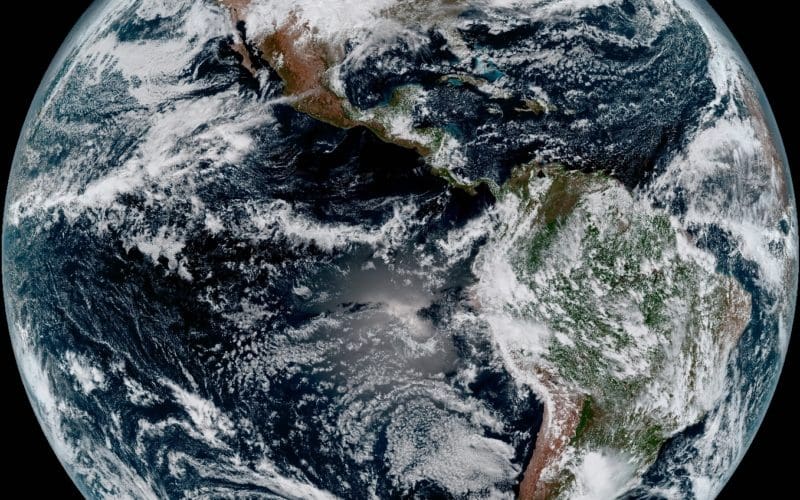The goal of a weather satellite is to produce as much useful data as possible. That's because more data means improved forecasts — and better forecasts is an idea that any voyager can endorse. The latest NOAA weather satellite to come on line has made an impressive leap forward in photographic resolution.
The first polar orbiting weather birds did their best, but the nature of their low earth orbits and low res cameras meant they could only take weather photos and gather other data over a particular place on the earth a few times a day. The next step was the geostationary weather satellite that hangs over one spot on the earth and sucks up data continuously. So how do weather satellite designers improve on that? The answer is better cameras that can take photos with high resolution detail. The better the resolution, the more useful information can be teased out. The latest NOAA/NASA Geostationary Operational Environmental Satellite (GOES) is GOES-16. It was launched on November 19, 2016 on an Atlas V rocket from Cape Canaveral Air Force Station in Florida and has been undergoing testing and calibration. On January 23 NOAA/NASA released high definition images from the new satellite. GOES-16 has the first major instrument upgrade to U.S. GOES satellites in a long time, giving four times the resolution of the previous GOES generation.
As NOAA put it in a press release, “Today’s release of the first images from #GOES16 signals the start of a new age in satellite weather observation!!!” “This is such an exciting day for NOAA! One of our GOES-16 scientists compared this to seeing a newborn baby’s first pictures — it’s that exciting for us,” said Stephen Volz Ph.D. director of NOAA’s Satellite and Information Service. “These images come from the most sophisticated technology ever flown in space to predict severe weather on Earth. The fantastically rich images provide us with our first glimpse of the impact GOES-16 will have on developing life-saving forecasts.”
Go to this page for a gallery of spectacular GOES-16 images.

